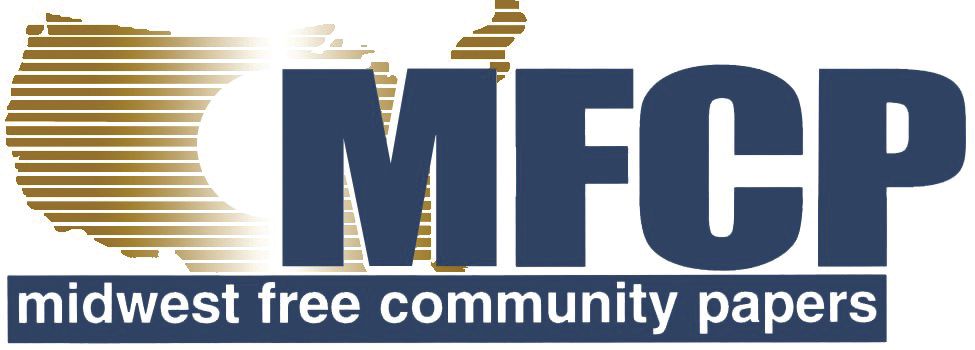NEWSPAPER RESOLUTIONS FOR '26

Kevin shares ten resolutions as newspapers begin the new year
I've visited thousands of newspaper offices over the years. It always brings a smile to my face when I see one of my columns permanently placed on a wall. It happens more often than you might think. It seems like readers have a pronounced affection for lists, and what better time than the new year to create potential wall material.
Consider those words the preface for my New Year's list for 2026.
Begin 2026 by creating a calendar for the upcoming year. Gather the entire staff together to brainstorm ideas for the coming year. Be sure to include elections, holidays, sports seasons, festivals, and community milestones. Schedule special sections early to give advertisers plenty of time to make their marketing plans. Helping advertisers plan their year can pay significant dividends.
Update your mission statement, or create one if you don't already have one. Make sure that your staff and your readers understand why your newspaper exists. State what your paper exists to do: tell community stories, celebrate local life, hold government accountable, and more. Be sure to put the mission statement in your media kit, on your website, and in your printed paper. Your mission statement should guide everything you do.
Update the design of your newspaper. Styles change all around us. The clothes we wear, the cars we drive, the color we paint our houses, and our kids' haircuts are all functions of style. Our newspapers are no different. Be sure to include a major headline and photo on each page. If you don't have a significant story, pick a story and make it the dominant story on the page. A big headline draws readers to the page. Don't allow your paper to become outdated. Stay abreast of the latest styles in color and design.
Improve the print quality of your newspaper. Make sure your color settings are adjusted correctly in Photoshop. Check that the dot gain is set to maximize quality. Save your photos at the appropriate size and resolution. Steer clear of color blocks and reverse text. Discuss ways to improve the ink on the page with your printer.
Discuss goals with your advertisers. Ask about their goals for the year. Brainstorm ways you can help them meet those goals. Offer packages that are simple. Include print, online, special sections, email blasts, and social media in each package. Don't overcomplicate the process. Almost no one knows what a column inch is.
Invest in your team. Find workshops, webinars, and training events to grow the skills of your designers, advertising staff, editors, and reporters. Inquire about opportunities through your press association. Take everyone out to lunch.
Create a reader's advisory panel if you don't already have one. Determine a meeting schedule and stick with it. These might be monthly or quarterly. Take the process a step further by scheduling a focus group of 12-20 community members.
Make a list (including staff brainstorming) of interesting people in the community for potential human-interest stories throughout the year. Set a goal of having at least one sizable human-interest story in each issue. You might even create a designated page for this.
Tidy up your office. As simple as this sounds, I visit many messy offices. Heck, mine is one of them. Let's take the first of the year to do a "spring cleaning" and get our workspace in order.
Create a new weekly feature. It might be "Teacher of the Week," "Student of the Week," "Unsung Hero," or "From the Archives. The possibilities are almost endless.
With the advent of online training and consulting, I don’t visit as many newspapers as I used to. You can bet when I do, I’ll be on the lookout for this column on the wall.
Happy New Year.
Kevin Slimp has been a popular consultant and speaker in the newspaper industry since developing the PDF remote printing method in 1994. His upcoming webinars on design, circulation, and software can be found at newspaperacademy.com.
Kevin Slimp is former director of The University of Tennessee Newspaper Institute and founder of NewspaperAcademy.com.
I've visited thousands of newspaper offices over the years. It always brings a smile to my face when I see one of my columns permanently placed on a wall. It happens more often than you might think. It seems like readers have a pronounced affection for lists, and what better time than the new year to create potential wall material.
Consider those words the preface for my New Year's list for 2026.
Begin 2026 by creating a calendar for the upcoming year. Gather the entire staff together to brainstorm ideas for the coming year. Be sure to include elections, holidays, sports seasons, festivals, and community milestones. Schedule special sections early to give advertisers plenty of time to make their marketing plans. Helping advertisers plan their year can pay significant dividends.
Update your mission statement, or create one if you don't already have one. Make sure that your staff and your readers understand why your newspaper exists. State what your paper exists to do: tell community stories, celebrate local life, hold government accountable, and more. Be sure to put the mission statement in your media kit, on your website, and in your printed paper. Your mission statement should guide everything you do.
Update the design of your newspaper. Styles change all around us. The clothes we wear, the cars we drive, the color we paint our houses, and our kids' haircuts are all functions of style. Our newspapers are no different. Be sure to include a major headline and photo on each page. If you don't have a significant story, pick a story and make it the dominant story on the page. A big headline draws readers to the page. Don't allow your paper to become outdated. Stay abreast of the latest styles in color and design.
Improve the print quality of your newspaper. Make sure your color settings are adjusted correctly in Photoshop. Check that the dot gain is set to maximize quality. Save your photos at the appropriate size and resolution. Steer clear of color blocks and reverse text. Discuss ways to improve the ink on the page with your printer.
Discuss goals with your advertisers. Ask about their goals for the year. Brainstorm ways you can help them meet those goals. Offer packages that are simple. Include print, online, special sections, email blasts, and social media in each package. Don't overcomplicate the process. Almost no one knows what a column inch is.
Invest in your team. Find workshops, webinars, and training events to grow the skills of your designers, advertising staff, editors, and reporters. Inquire about opportunities through your press association. Take everyone out to lunch.
Create a reader's advisory panel if you don't already have one. Determine a meeting schedule and stick with it. These might be monthly or quarterly. Take the process a step further by scheduling a focus group of 12-20 community members.
Make a list (including staff brainstorming) of interesting people in the community for potential human-interest stories throughout the year. Set a goal of having at least one sizable human-interest story in each issue. You might even create a designated page for this.
Tidy up your office. As simple as this sounds, I visit many messy offices. Heck, mine is one of them. Let's take the first of the year to do a "spring cleaning" and get our workspace in order.
Create a new weekly feature. It might be "Teacher of the Week," "Student of the Week," "Unsung Hero," or "From the Archives. The possibilities are almost endless.
With the advent of online training and consulting, I don’t visit as many newspapers as I used to. You can bet when I do, I’ll be on the lookout for this column on the wall.
Happy New Year.
Kevin Slimp has been a popular consultant and speaker in the newspaper industry since developing the PDF remote printing method in 1994. His upcoming webinars on design, circulation, and software can be found at newspaperacademy.com.
Kevin Slimp is former director of The University of Tennessee Newspaper Institute and founder of NewspaperAcademy.com.
